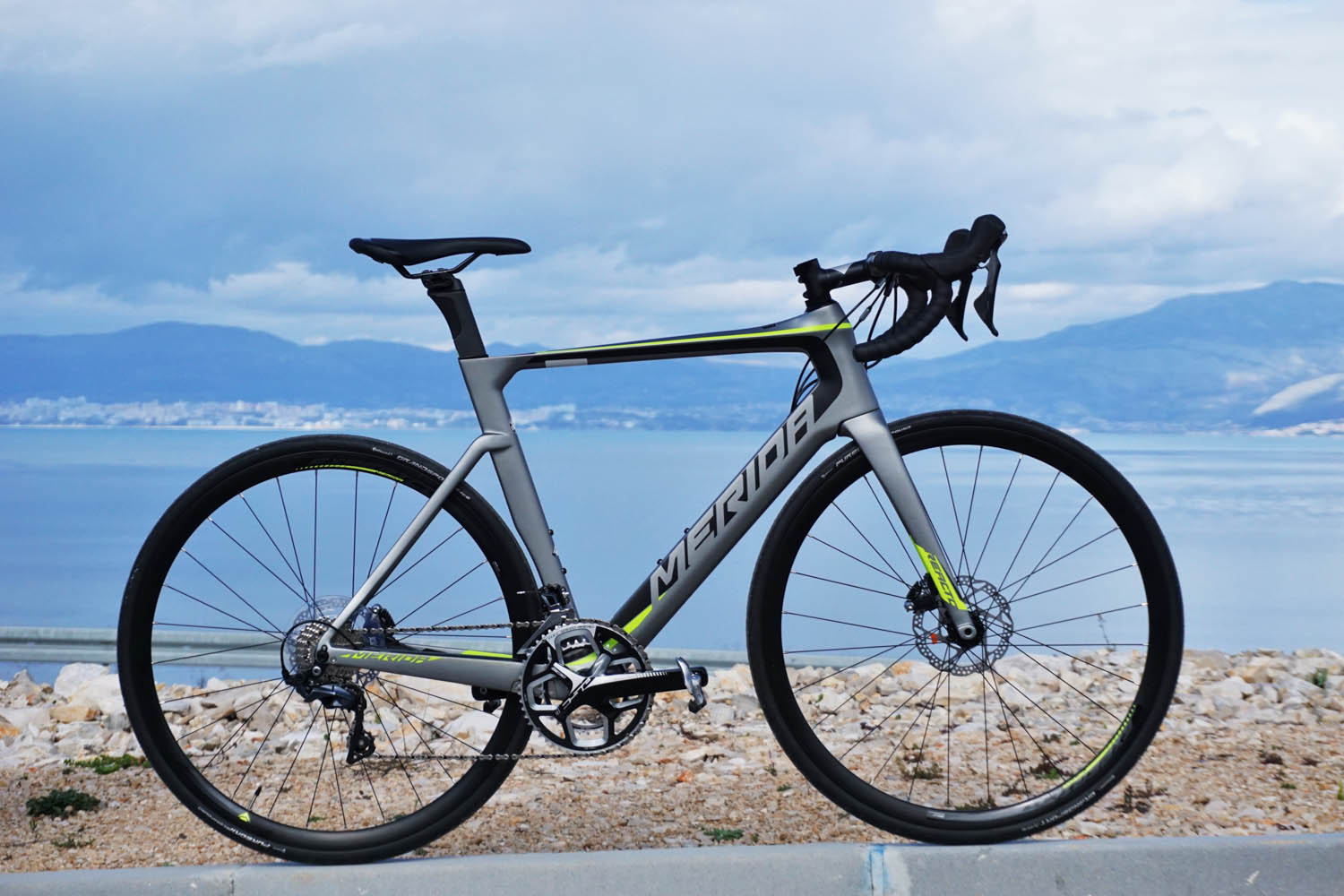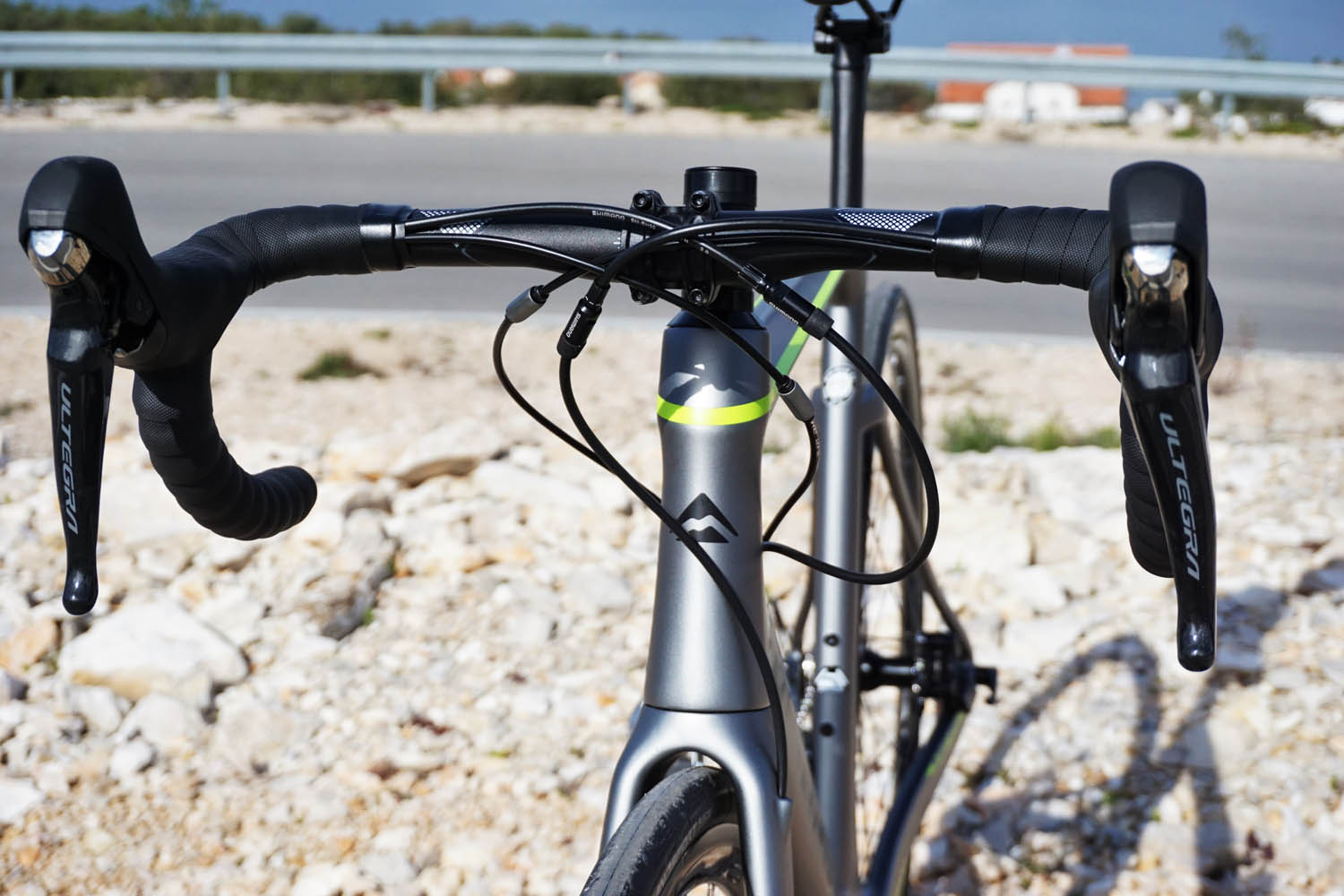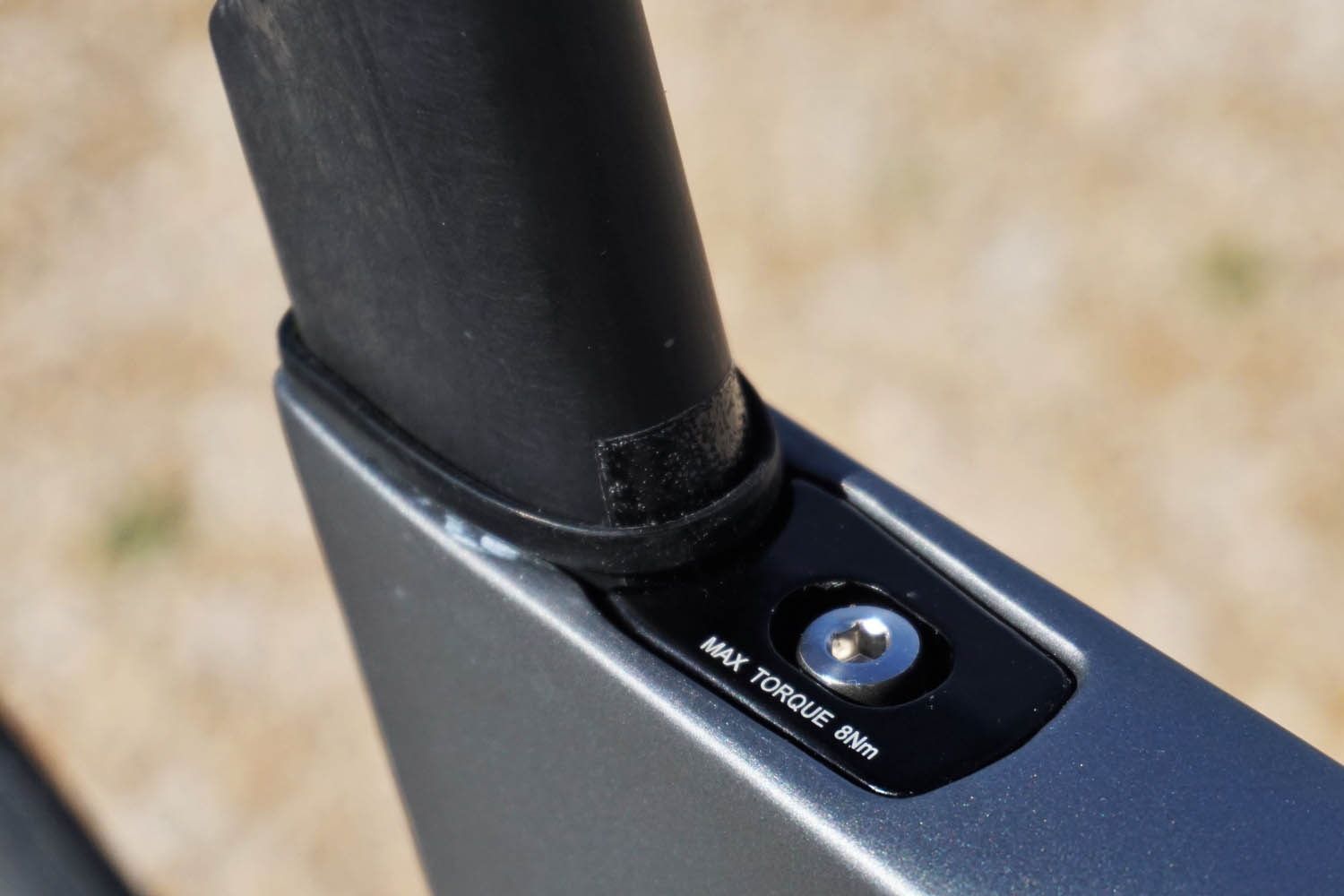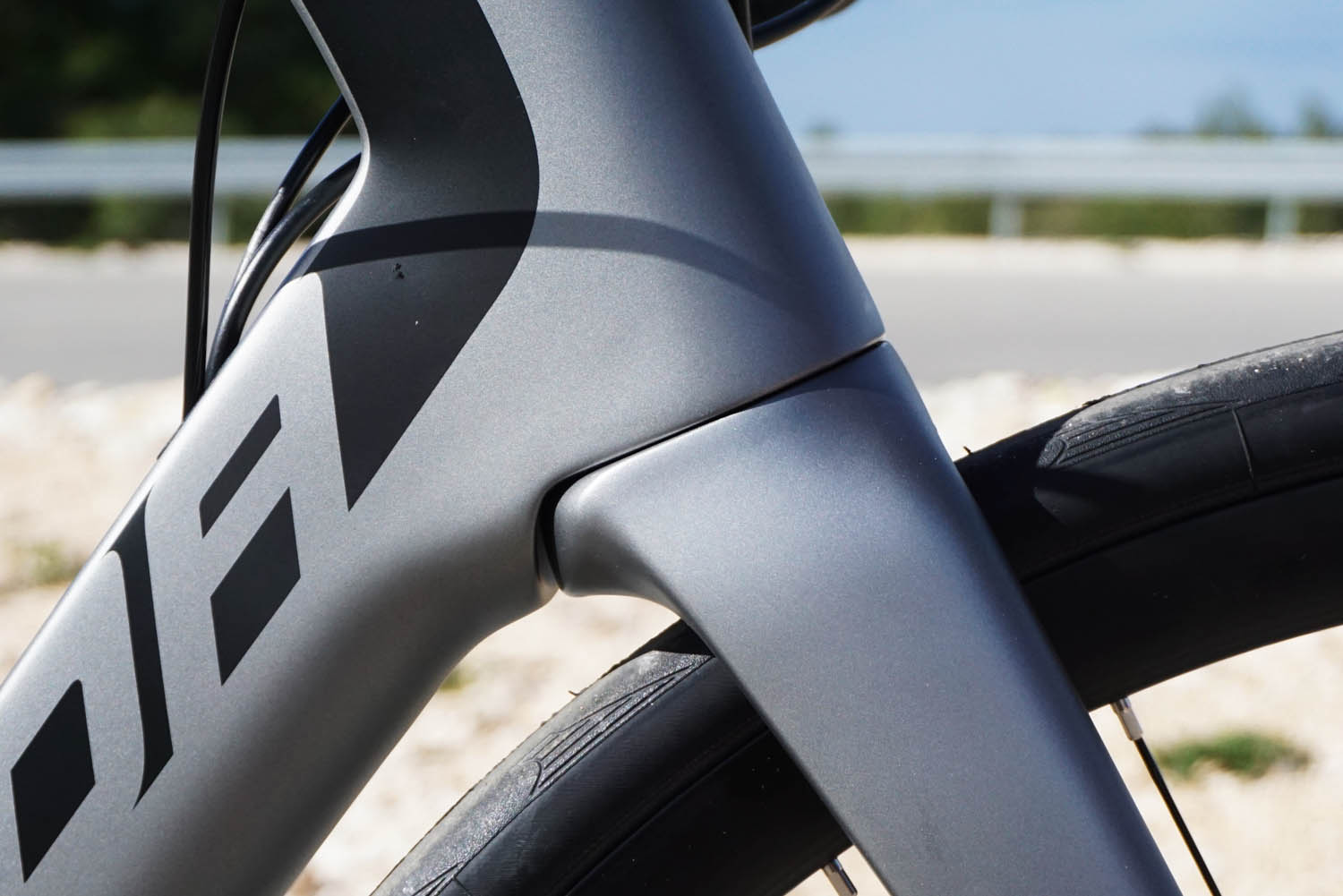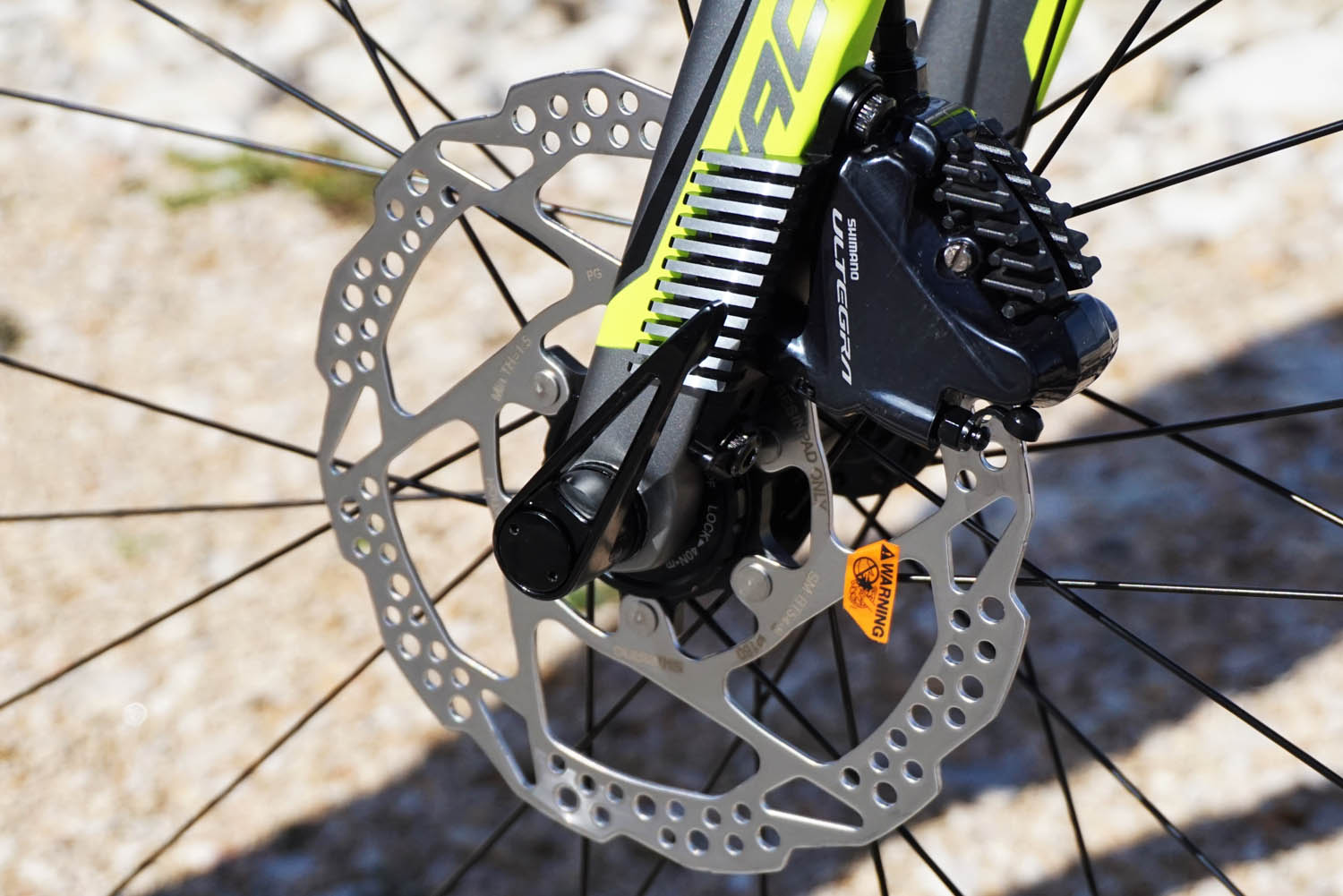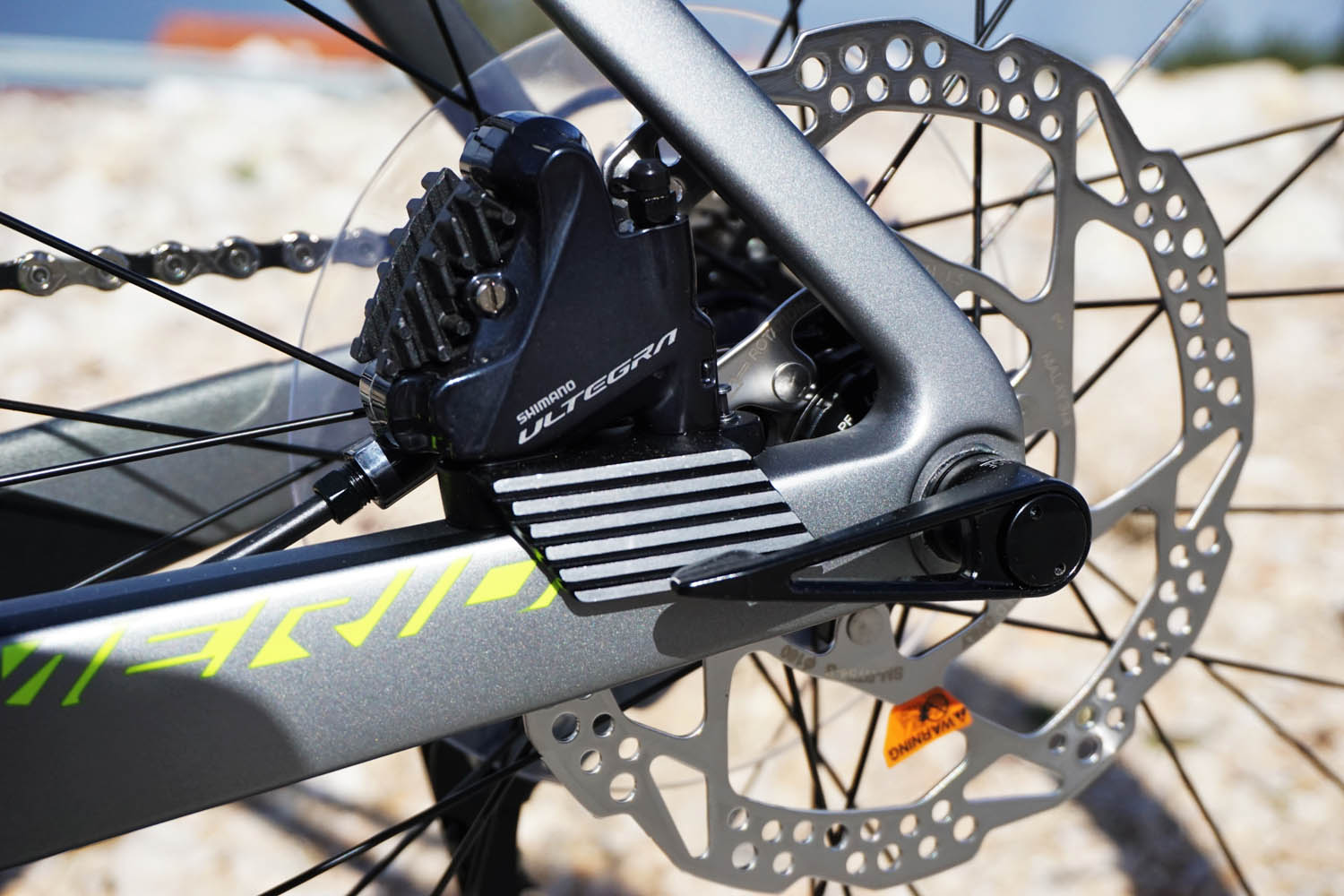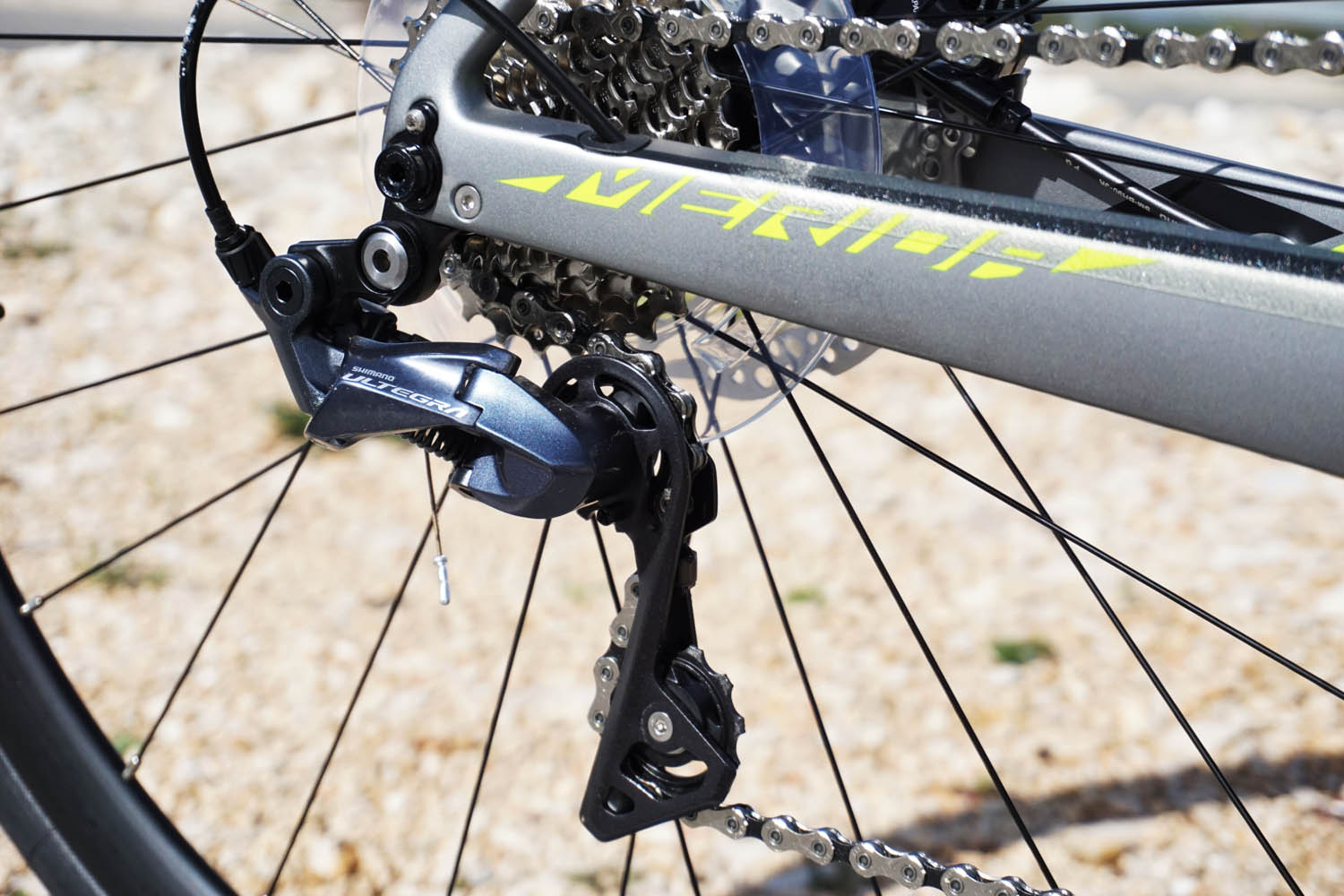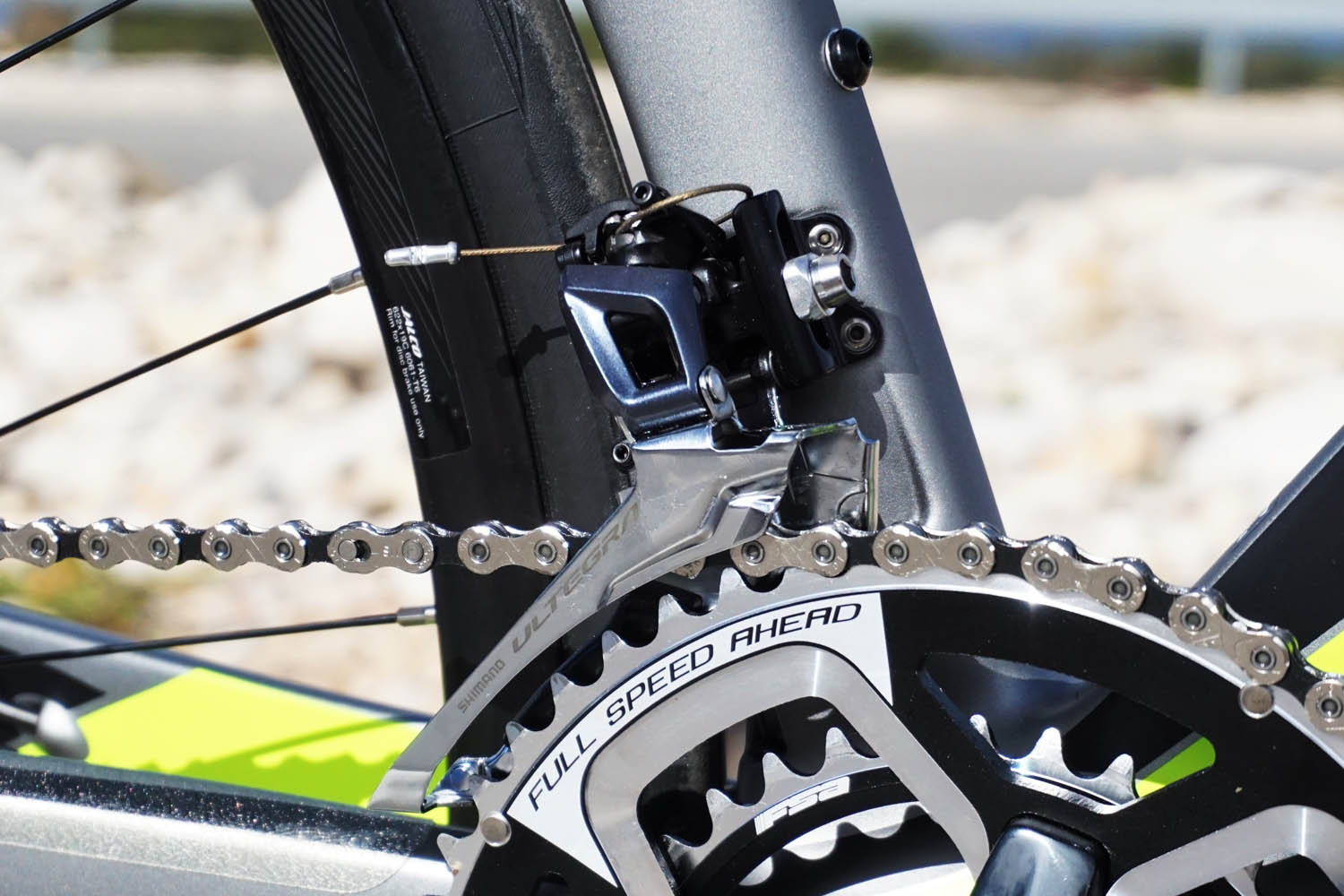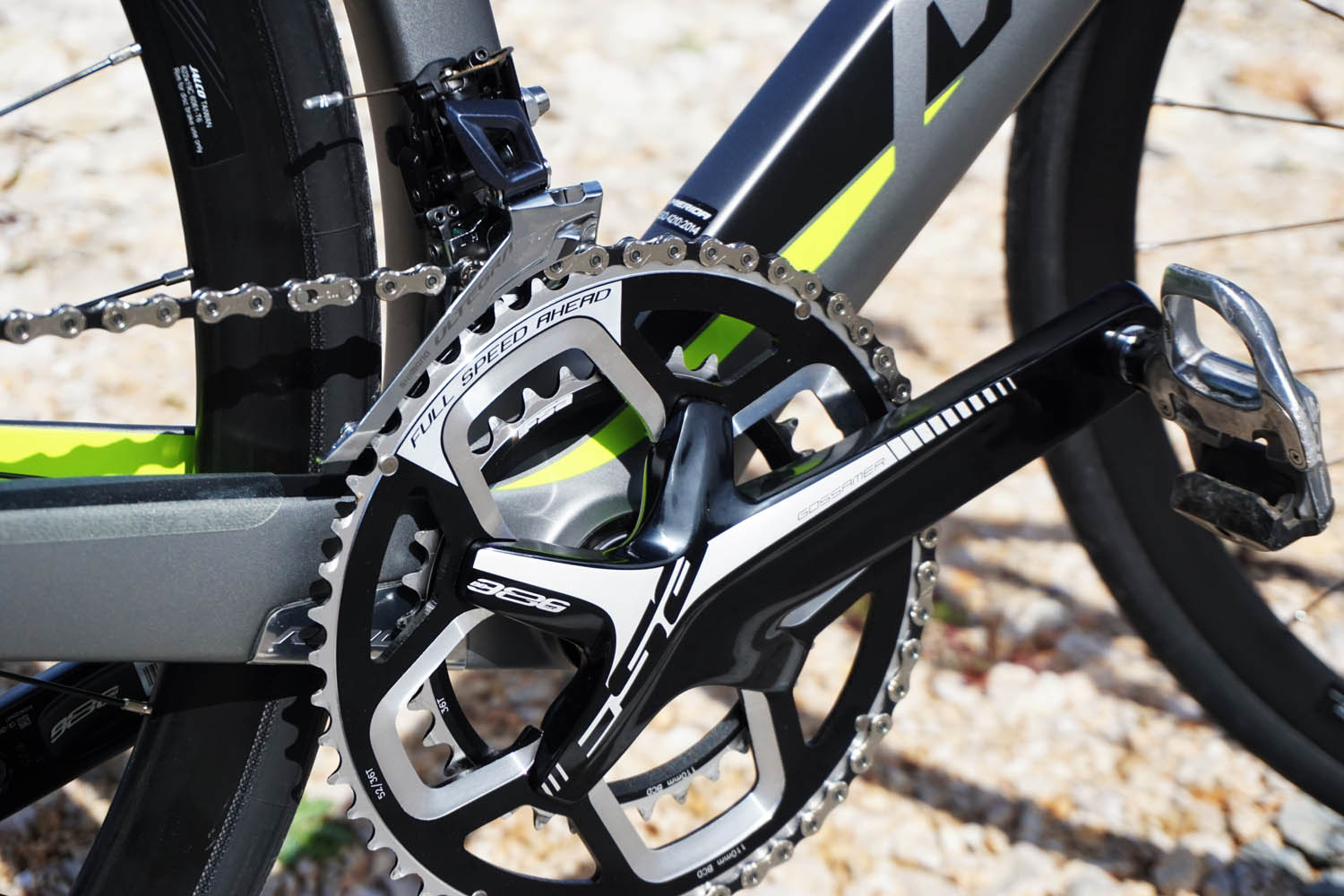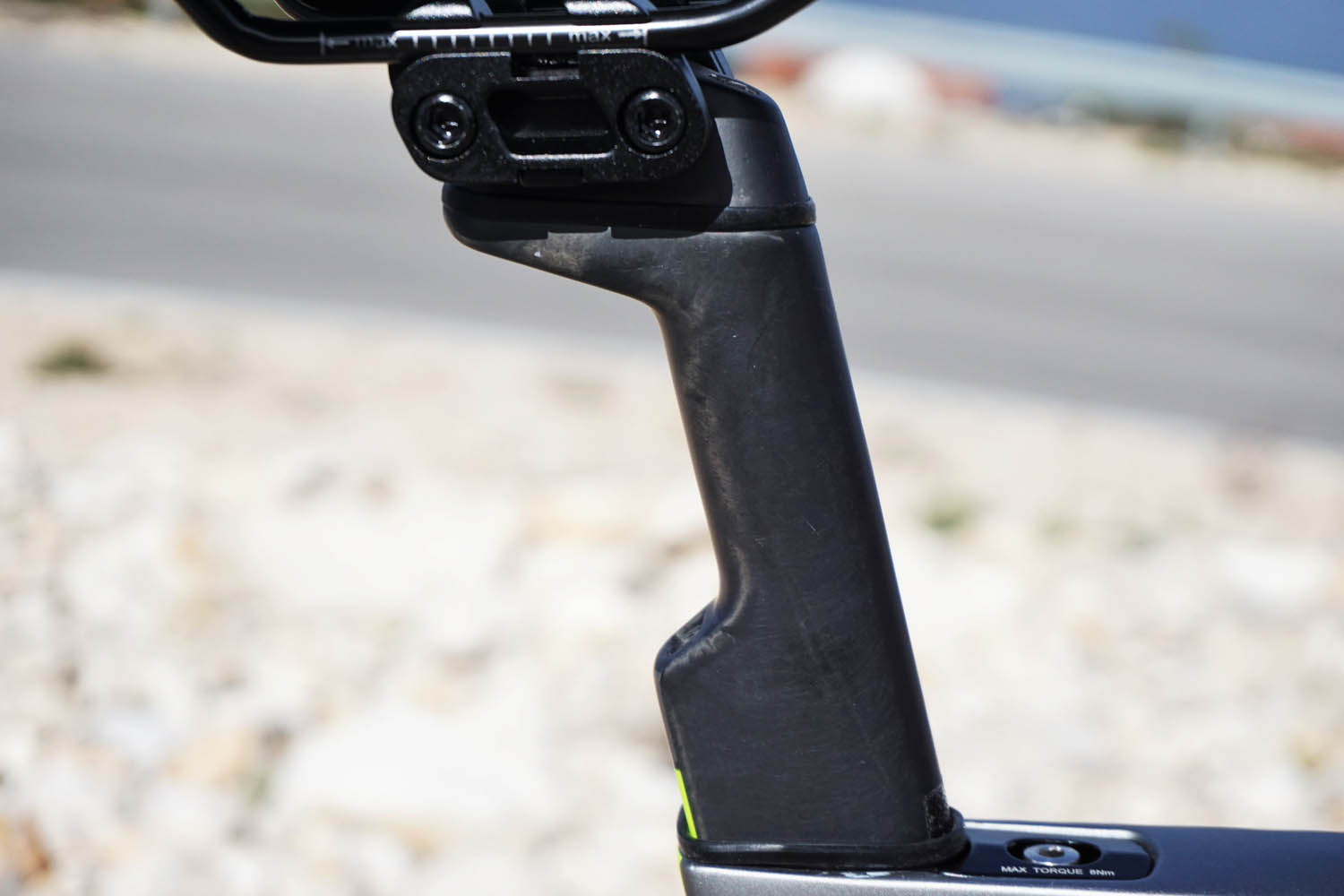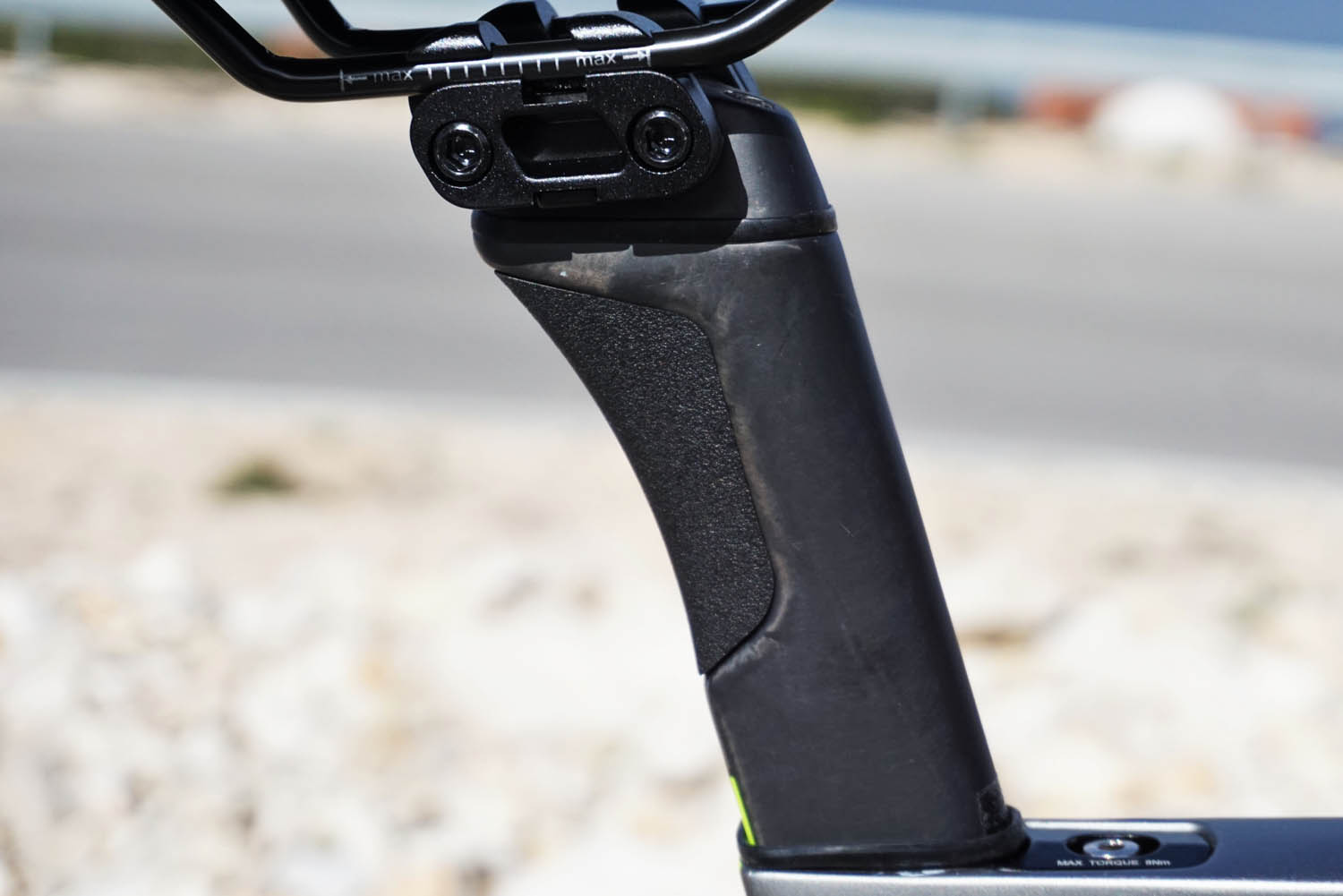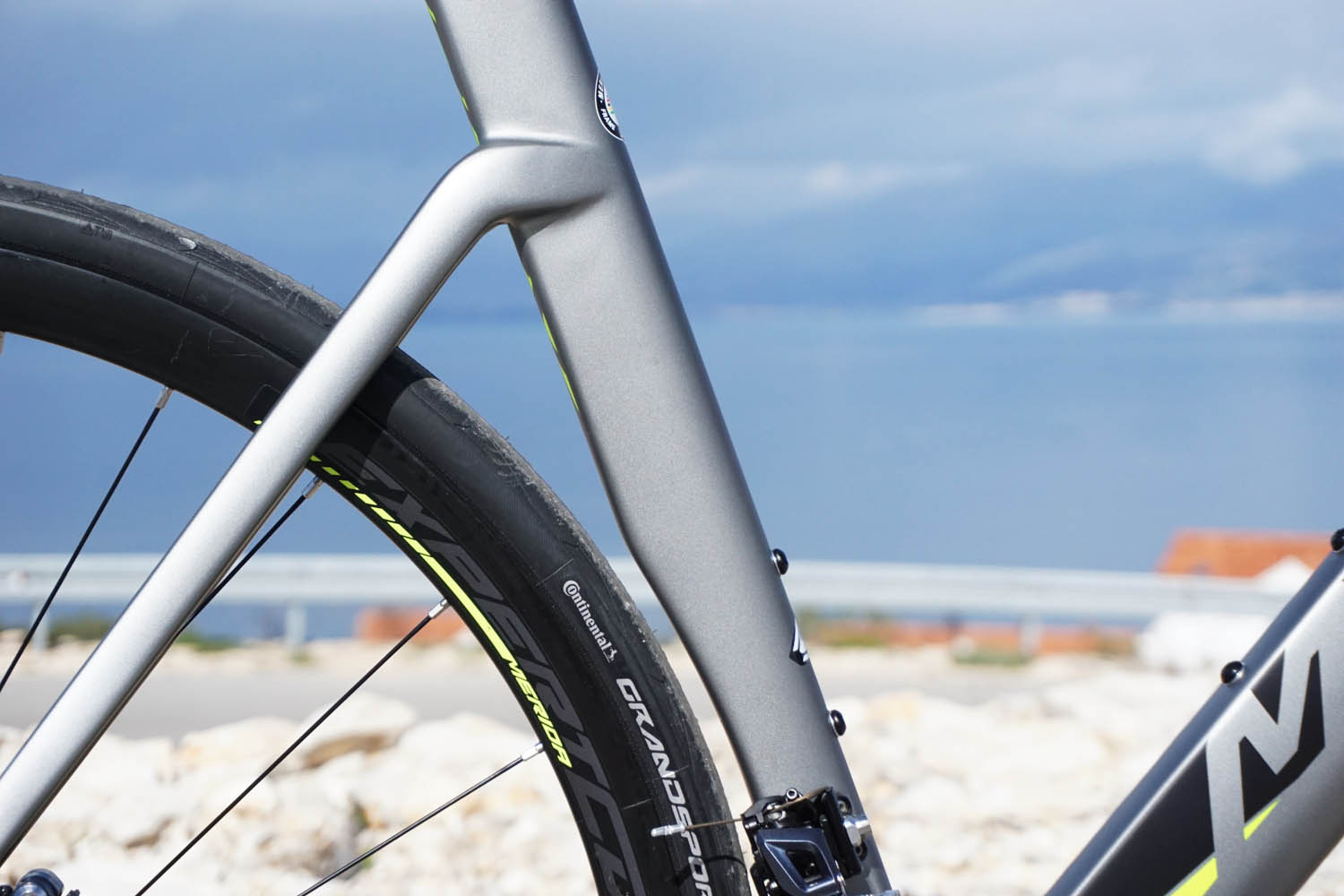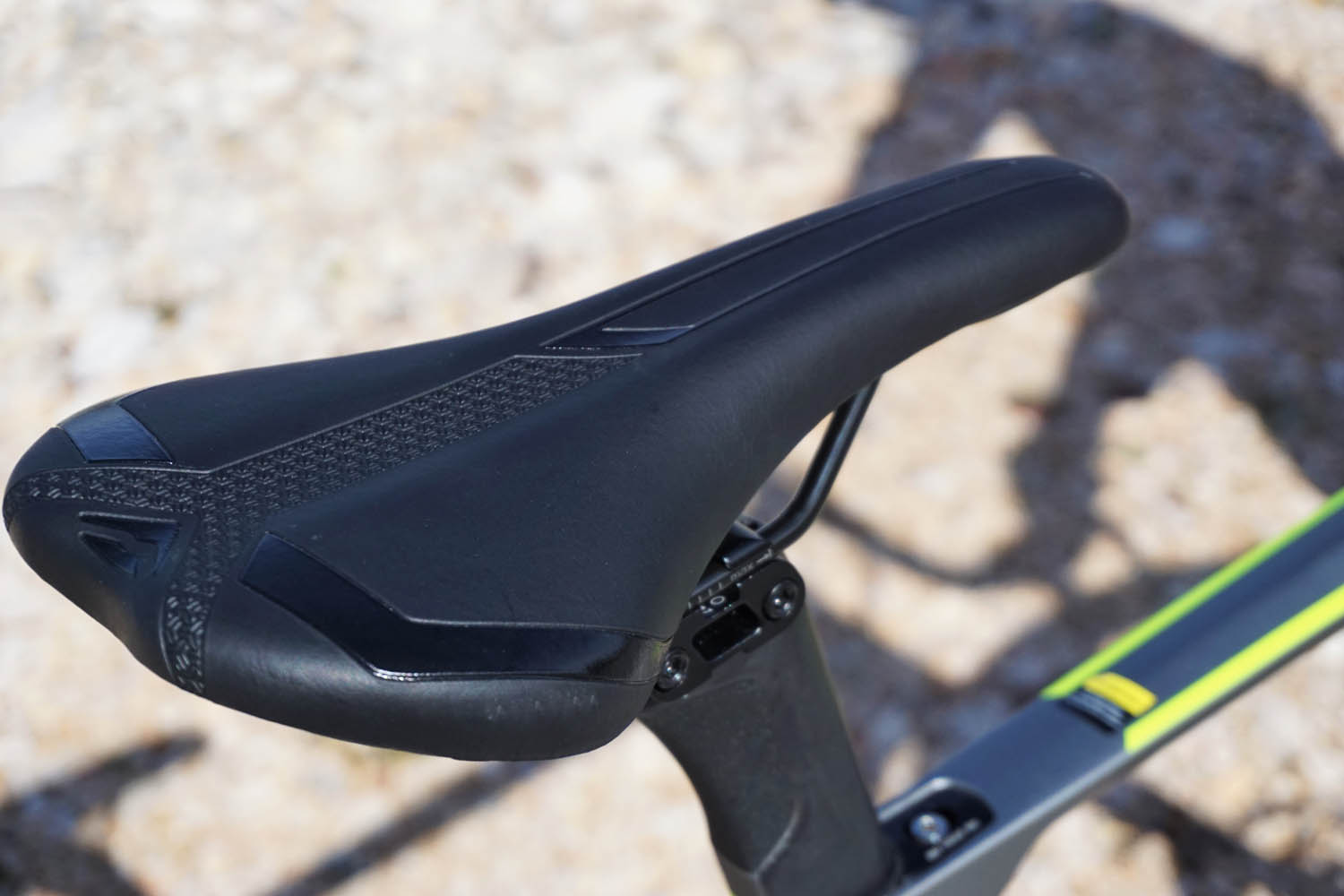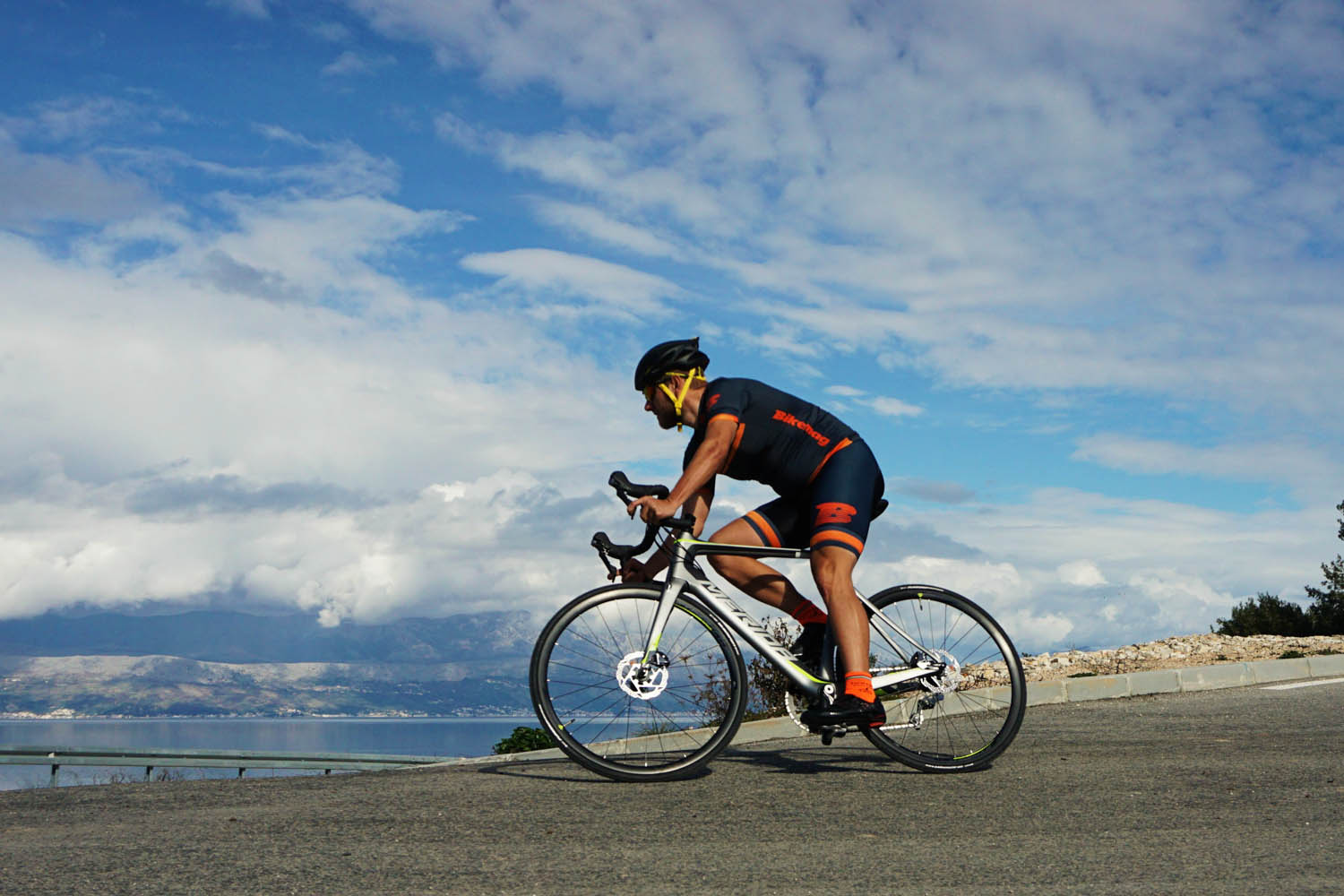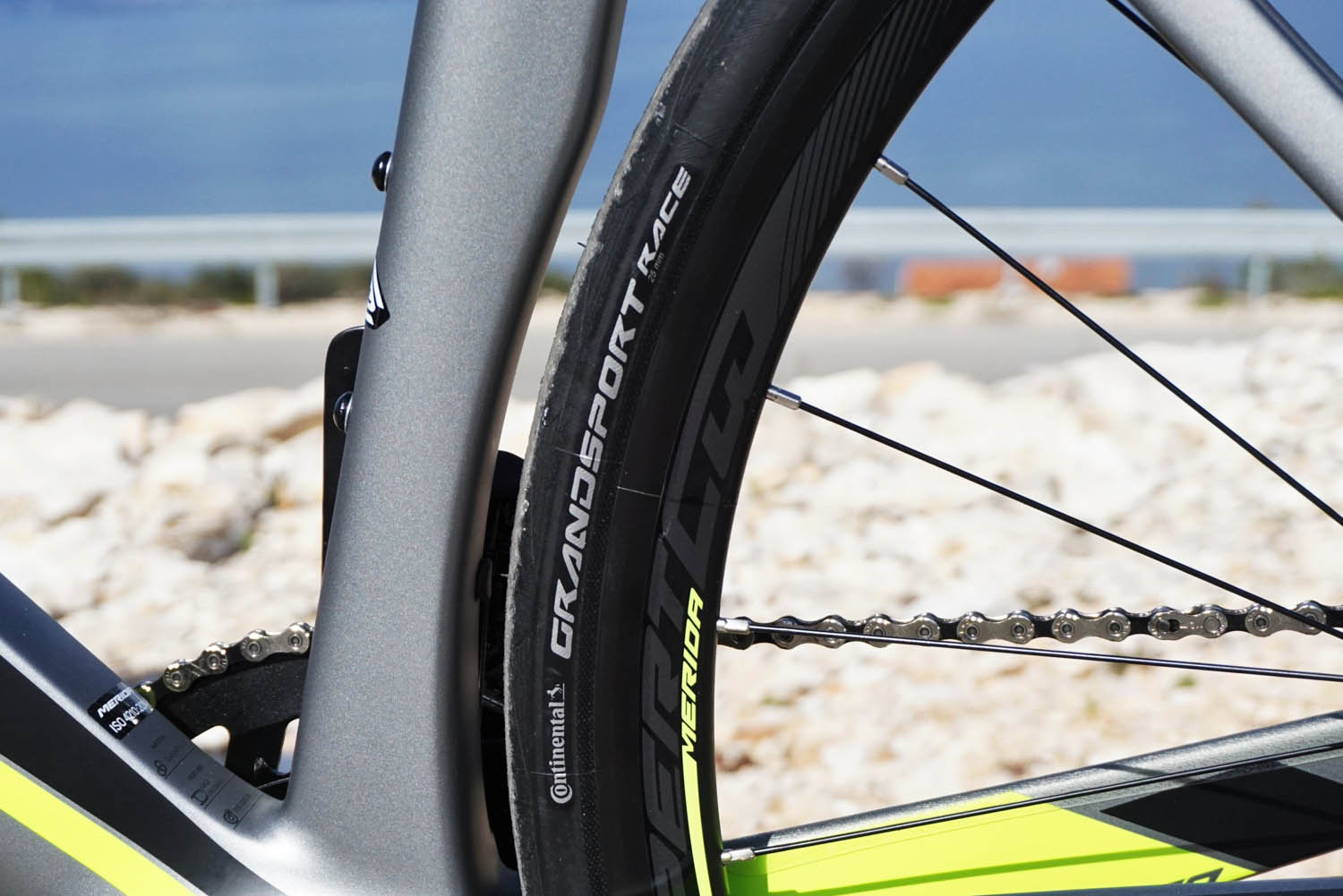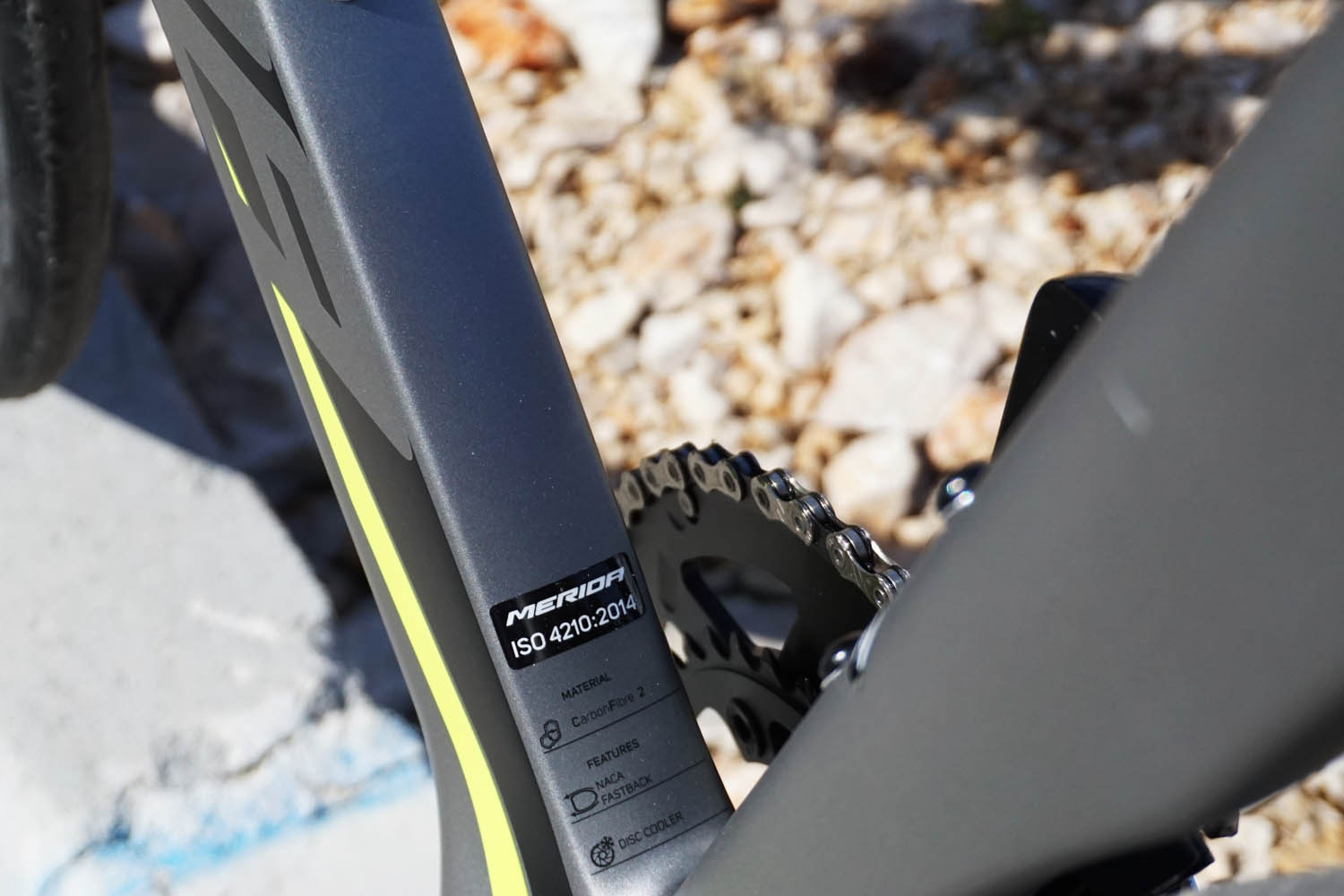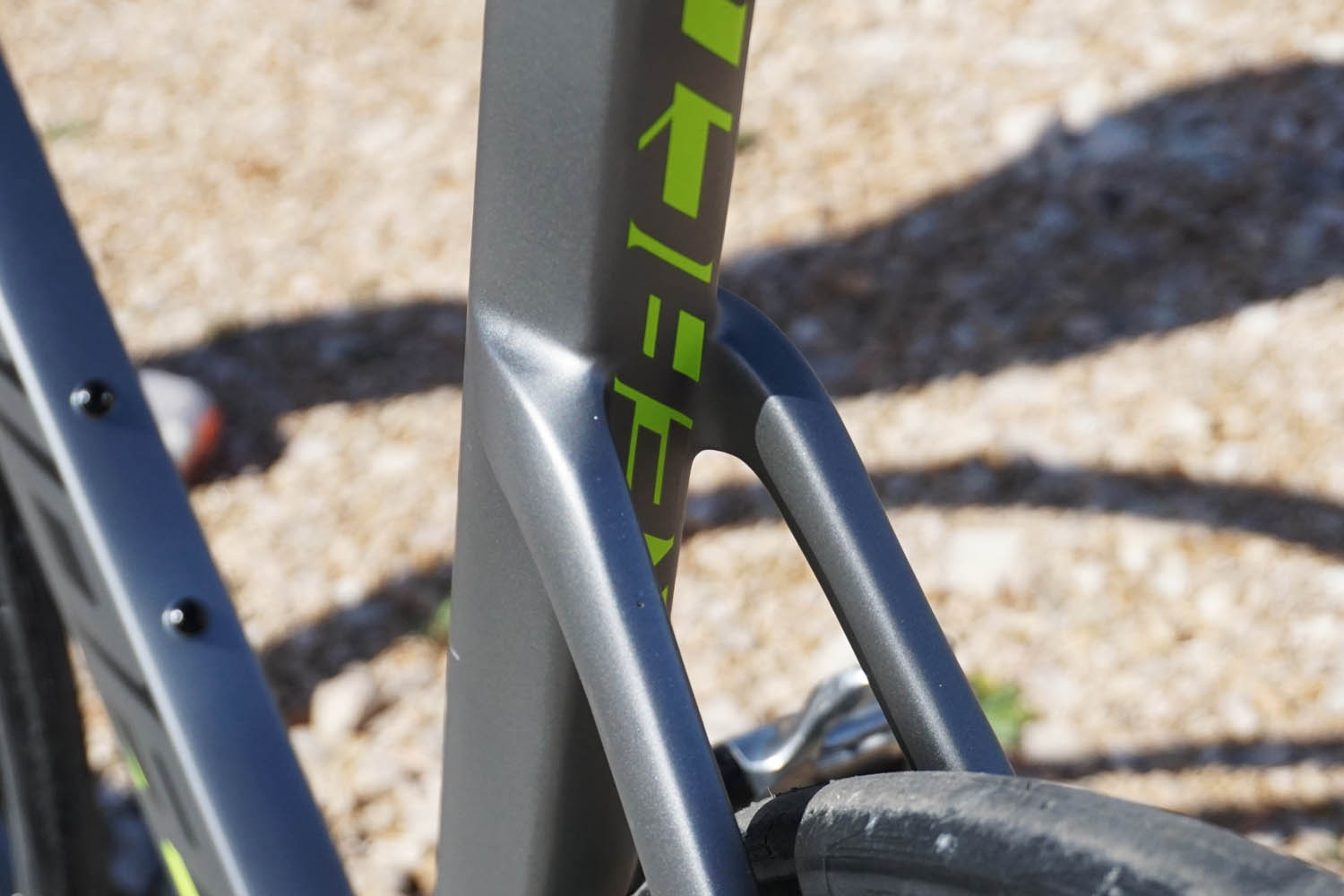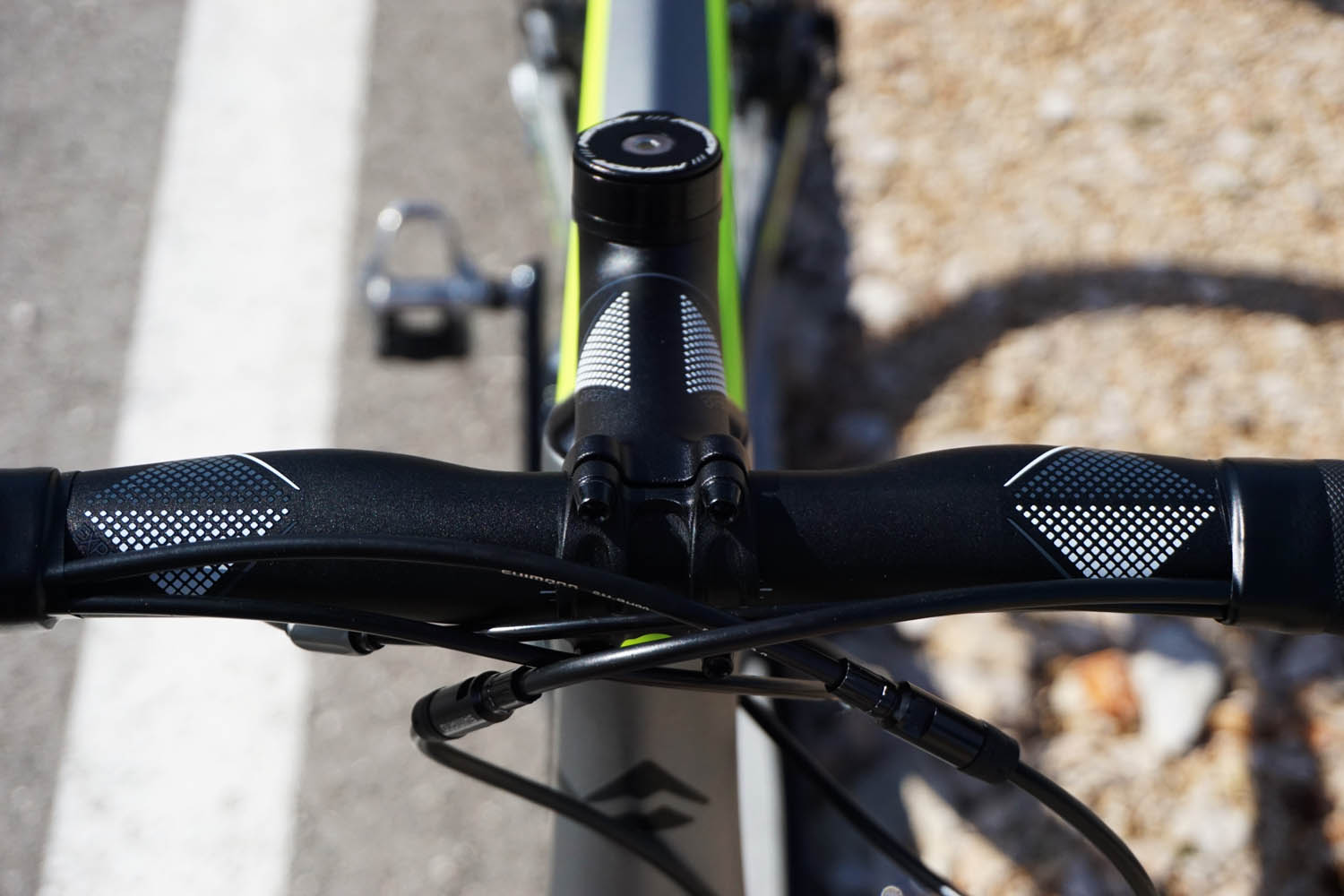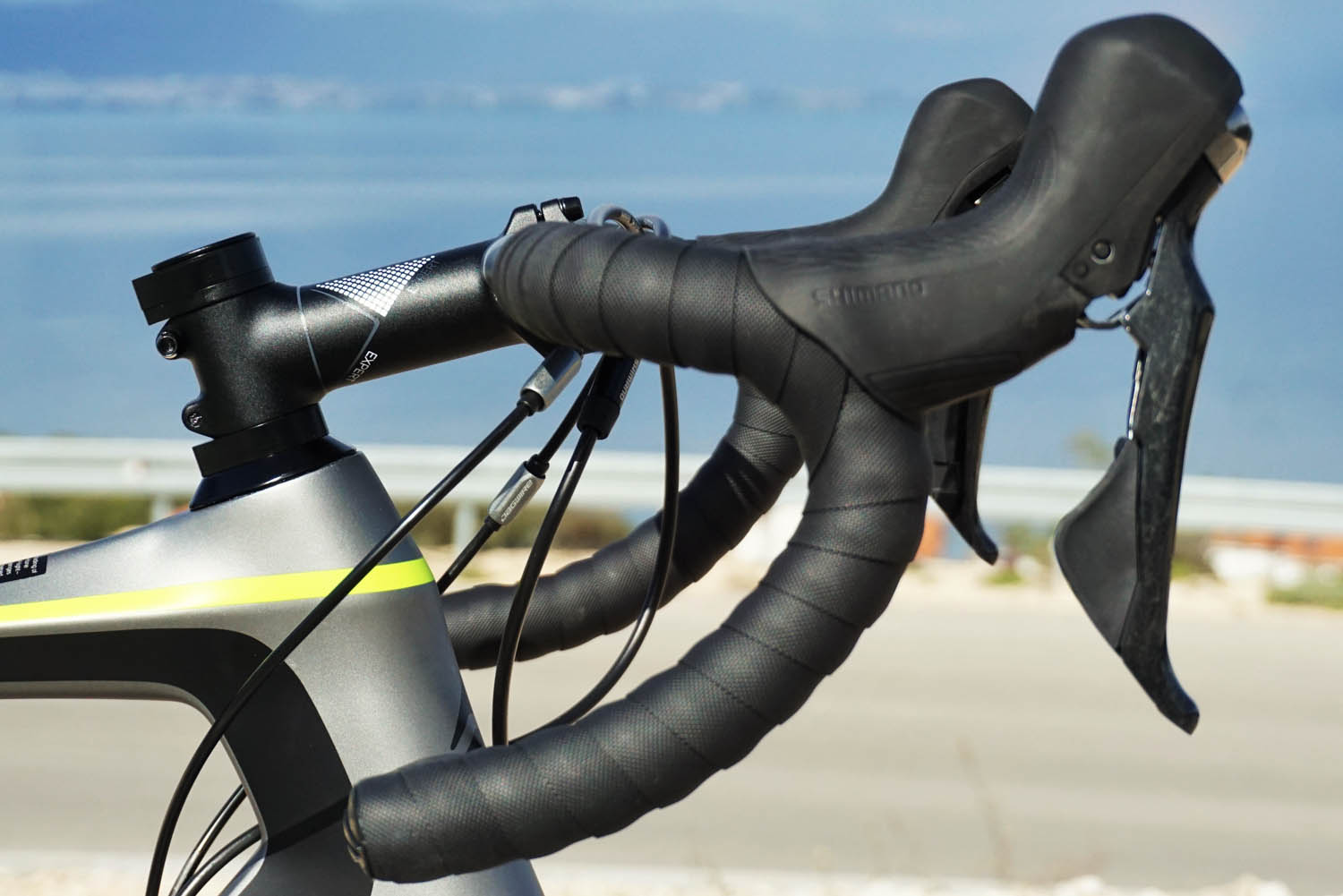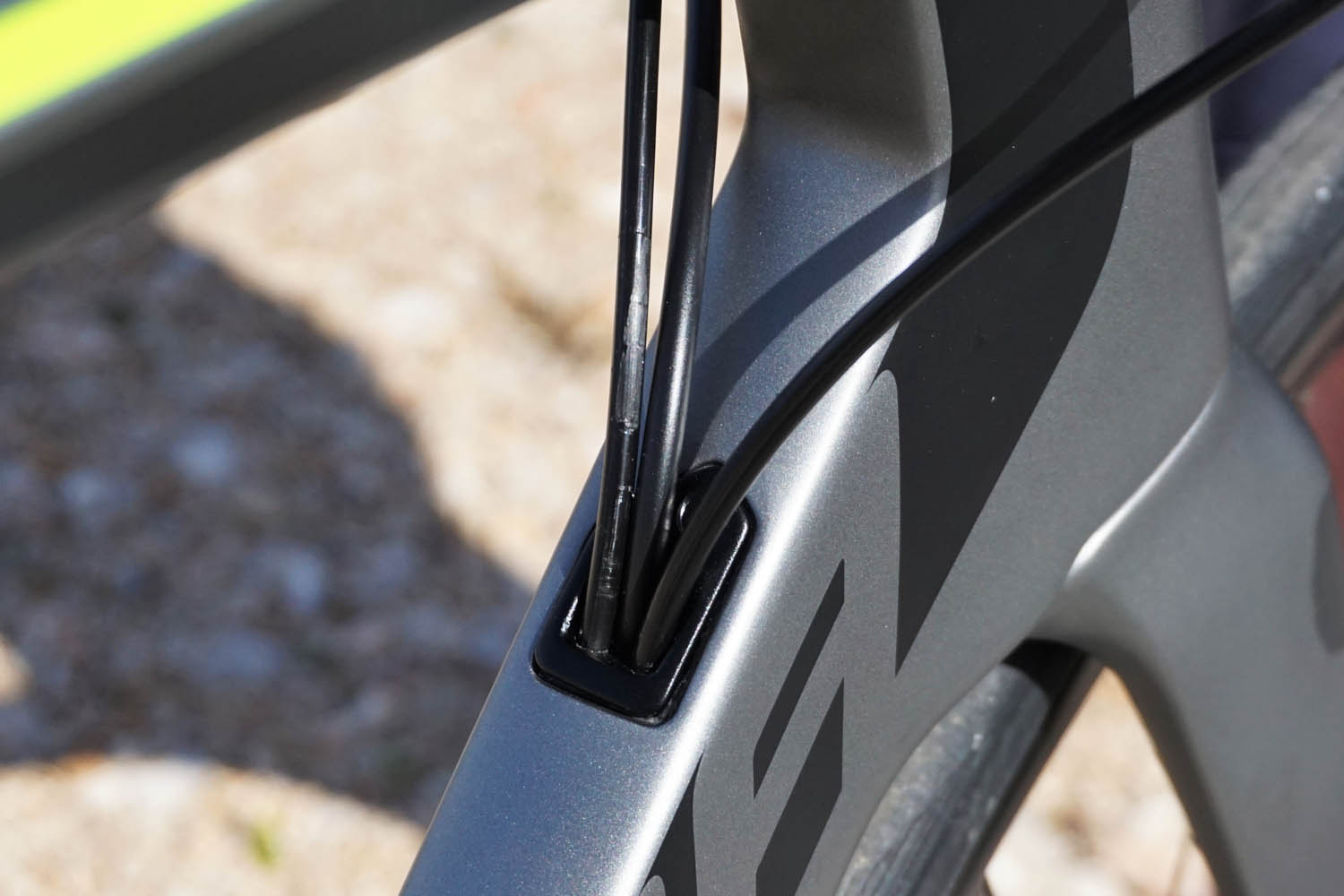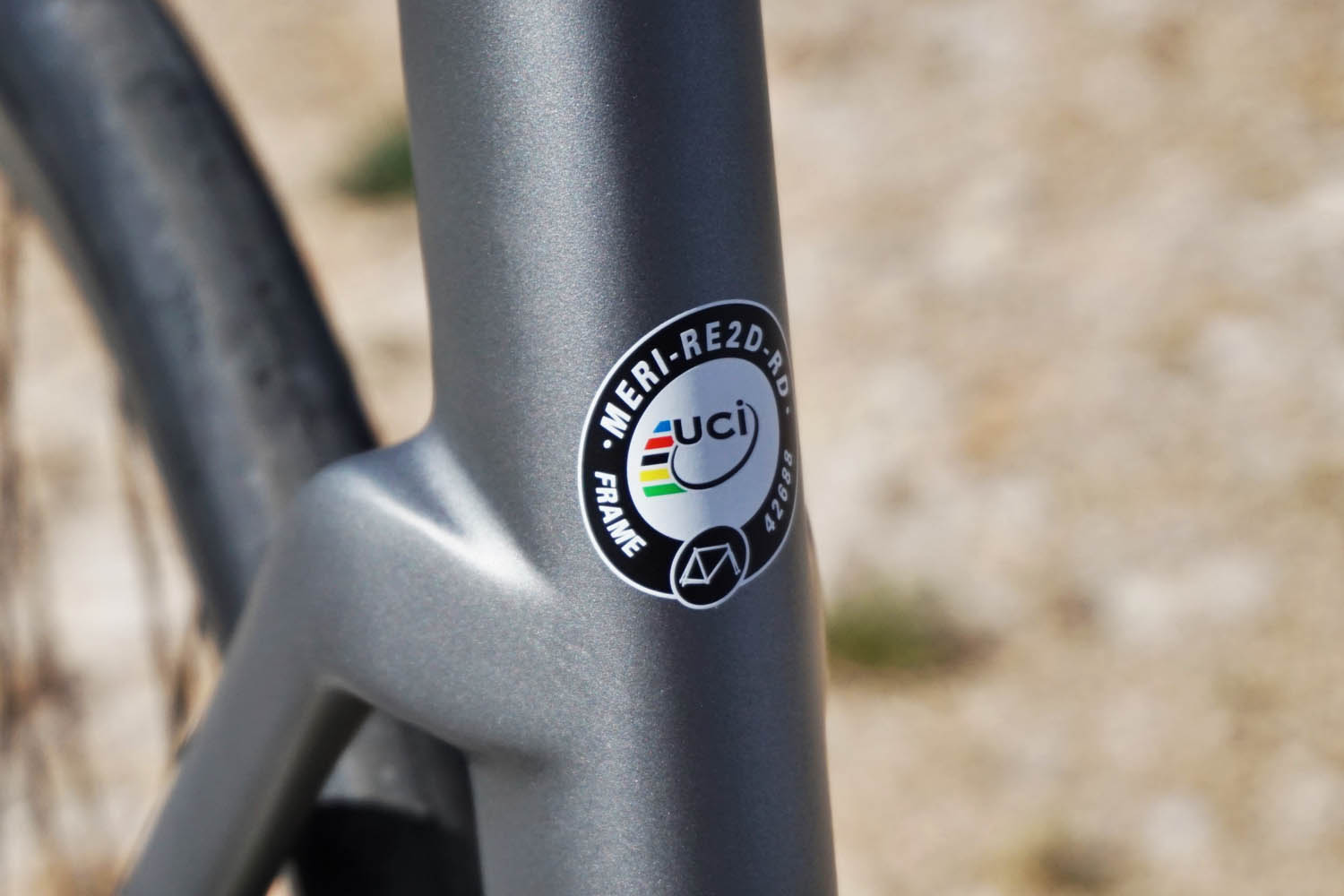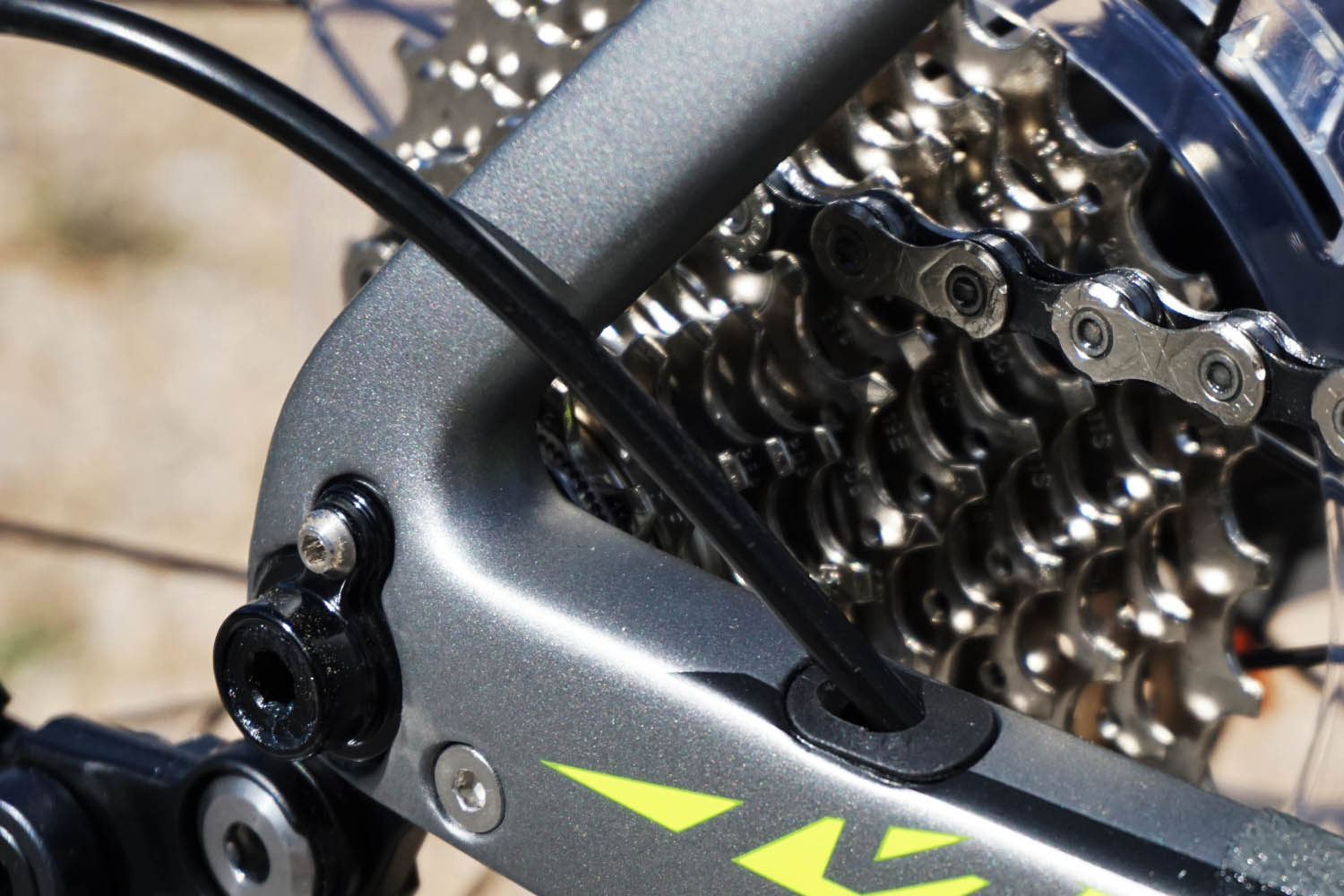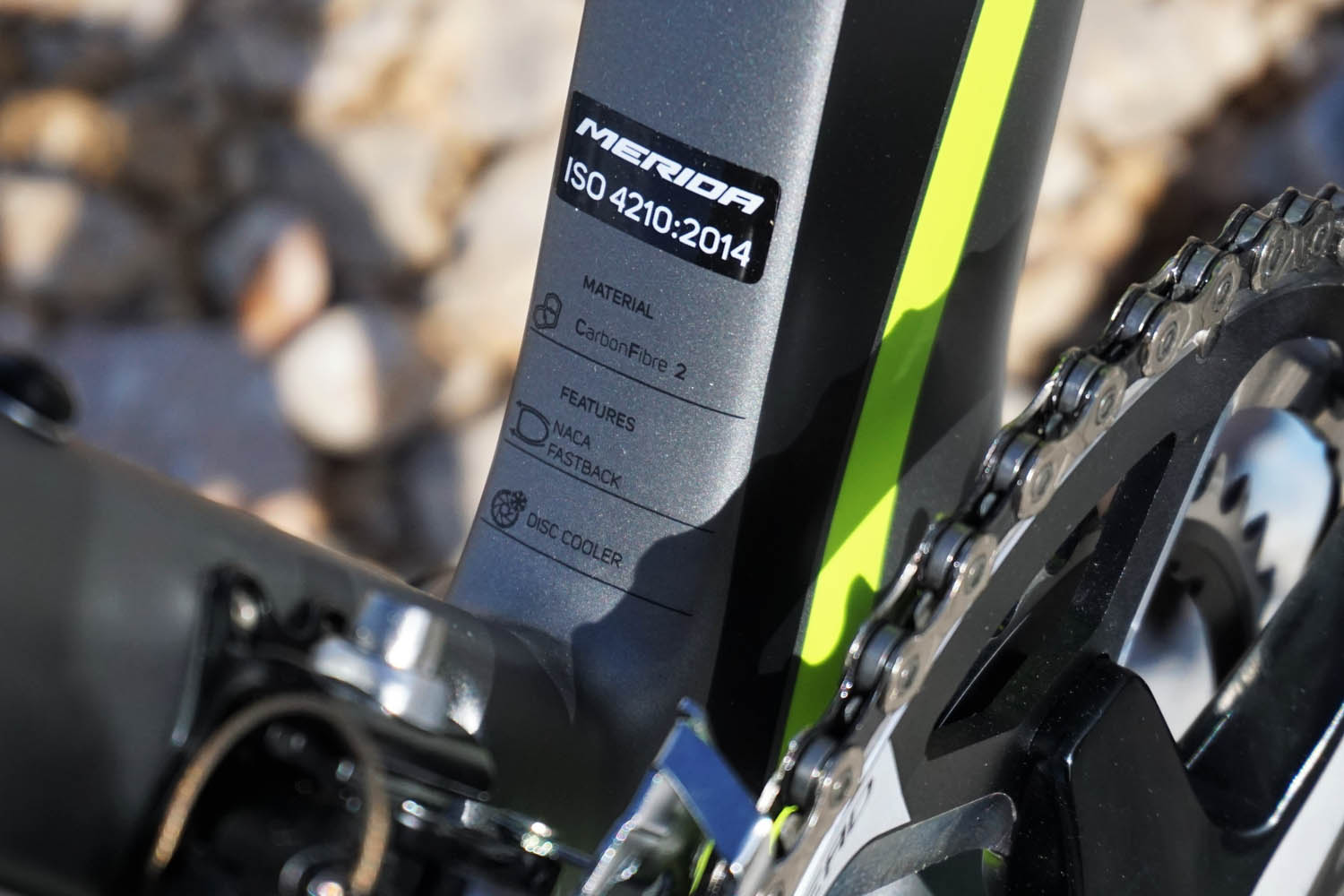The Merida Reacto Disc 5000 makes its entry from the shadows of the professional bikes, inherits the engineering work targeting extremely low air-resistance and stiffness of high-end Merida bicycles developed for ProTour riders. Whether it is road racing, time trial or triathlon, the Reacto can save you valuable seconds!
The Reacto name definitely sounds familiar to the fans of top-level road bike racing, since the World Tour BAHRAIN MERIDA professional team has been using the Merida top-of-line aero bike since 2017. The concept of Reacto and other aero bikes dates back to the beginning of the decade, when many manufacturers have come to realise that in most road race competitions, the lowest possible weight does not provide offer a significant technical advantage. The UCI limits the weight of bikes to such extent that the threshold may be achieved by bikes in the sub-premium price level. This limitation notwithstanding, the +/- 1 kg of weight on the bike is rarely noticeable in practice, on the other hand air resistance is hard to fight. It does require significant energy to cut through the air for both at pro or amateur rider.
Undoubtedly the rider had the greatest frontal surface, but it is still useful to make bicycles more aerodynamic to save some valuable seconds or watts. When the manufacturers set out to crate the fastest and most aerodynamic bikes, they have also aimed to improve drive stiffness, to avoid loosing energy due to frame flex. In the course of field sprints, air drag has a key role (since physics dictates, that air resistance increases with speed on the power of two), nevertheless the watts exerted are staggering, and the frames have to have the construction to withstand these forces. That’s how the new aerodynamic road racing bikes were born, which quickly became the favourites of professional riders on flat stages. Merida named their “aero” road bike Reacto, which soon became a common sight at the highest level of competition, ridden by the stars of BAHRAIN MERIDA. The renowned Scultura road bike remained in the lineup, aimed at the mountain stages and as an all-rounder race model, as a perfect complement for the Reacto.
In the last few years, the Reacto line has expanded to embrace a complete family of models. There is the entry-level offer up to the top-of-the-line model ridden by the professionals bike racers. The subject of our present test is a disc-equipped, carbon frame CF2, which is one level below the CF4 professional series, where the frame geometry is designed to meet the needs of hobby/amateur athletes. Merida knows well that different type of riders require different bicycles: there are those who earn their living by racing in the saddle at the top level, while others just want to enjoy the pleasure of road riding at the weekend. Many riders would stop cycling altogether if they had to suffer the miles in the same body position as the professionals, hence the CF2 frames are designed for comfort, hence moresuited to average physical abilities. (Of course, is a small minority who prefer the geometry used by professionals: they still have the choice to buy a Recto CF4 model!)
Readers may not be interested in detail concerning the technical solutions Merida employed in the development of this truly streamlined bicycle, nevertheless please bear with me! First of all, there are the special tube shapes that allows the Reacto to slice the air instead of pushing it. This is true for most manufacturer’s aero road bike offerings, they are seek machines that simply look fast even when it is standing still. To further this concept, Merida spent a great amount of time and effort to develop the optimum shape of the tubes for advanced aerodynamics. Let’s examine these details!
First of all, there is the perfect integration of the frame and fork, no gap or broken line to be seen, nothing to cause air turbulence. Incidentally, the design of the frame set turned out to be also quite attractive! The shape of the seat tube – in addition to being streamlined – embraces the rear wheel to form a perfect rear-end integration. Fortunately the manufacturer did not follow the UCI’s infamous “credit card rule” (a minimum gap between the wheel and the frame which is checked by inserting a bank card), so in case you pick up some road debris with the rear tire, it will not scratch the wheel-hugging part of the frame.
The aerodynamic concept is also quite apparent in the case of the head tube, the down tube and the seat stays, and all the details were taken into consideration by Merida. For example, the cables run inside the frame tubes, so they do not drag the passing air. My personal favourite is the wedge-type seat tube attachment integrated into the top tube, which has been used by other manufacturers with great success. I would also like to mention the seat tube shape, which is distinctly flattened, reminiscent of the specialist time trial bicycles. The manufacturing precision is staggering, it can be inserted and moved easily, despite the complex shape. This is the pitfall of such designs seen on many aero road frames where the seat post could not be perfectly positioned, proving to be noisy, or slipped during use. In the case of the Reacto, we experienced no such problems, the frame was completely silent in practice. Moreover we get a lifetime warranty for the Reacto frameset!
As a modern disc brake-equipped bike, the frame naturally employs thru-axles to secures the wheels, which is beneficial for stiffness and stability. I would highlight another advantage of this advanced design, namely it is easy to put the wheels back into the frame or to the fork, unlike in the case of frames employing traditional dropouts. Merida payed close attention to the ease of use, hence operating the thru-exles and positioning the wheels is much facilitated compared to other disc brake road bikes. The wheel almost pops into place, there is no need to find the exact position for the axle to be inserted. (This is no coincidence since the dics version of the Reacto is used in pro-level competition, where wheel changes have to performed as quickly as possible!)
With the exception of the crankset, we get the complete new Ultegra R8000 groupset. Recently we tested Shimano’s brand new offering, so I’ll not dwell into the technical details. In a nutshell, it does its job perfectly and effortlessly, the complete set is designed for harmony, the new front and rear derailleur is in line with the Japanese brand fine reputation. The FSA Gossamer crankset complements the Reacto concept perfectly with the “semi-compact” 52/36T chainrings, providing ideal gear ratios for flatland, hilly terrain and the mountains.
Let’s briefly deal with the accessories! The handlebar and the stem are own brand models, but there is no need to worry since they are high-quality pieces. The bend of the handlebar follows the modern trends, and the top is flattened for a comfort and a good grip. The aero-shaped stem spacers are also worth mentioning: although it’s a minor detail, the seamless design makes the cyclist’s heart beat faster!
I’ve already mentioned the seat tube, which designed specifically for this frame and Di2-compatible, in case the owner wishes to install an electric shifting system. Interestingly, on this model the clamp mechanism is reversible, so triathletes can achieve a steeper virtual seat tube angle, than specified for the frame. From 2019 all CF2 Reacto will be equipped with such a clamp. The saddle has a Merida logo, and it’s quite comfortable. The wheels are also from the manufacturer’s own products range, undoubtedly some weight could be saved if it was substituted by a premium wheelset. The rim is medium-height, aero-profile aluminum type with a 25 mm width Continental Grand Sport Race tires on the top. It sounds good to me, since I detest when the manufacturers are trying to save costs on one of the most important components, the tires.
Riding experience:
I was able to review the bike on the island of Brac, where there are relatively few flat stretches of road, on the other hand, steep slopes and descents are in abundance. Therefore I had the chance to test the rigidity of the frame on the climbs and aerodynamics on the downhills. First of all, it is important to note that the body position on the bicycle is different from the “normal” road bikes. The saddle is further forward and needs to be compensated by the handlebar position to some extent. Hence the Reacto requires the rider to take a more aerodynamic position, so not only the bicycle is “aero”, but also we also make our contribution to achieve higher speeds. Nevertheless the handling is almost the same as on a typical road bike, so you are not forced to adapt when hopping on the Reacto. It would not have been a good idea from Merida to change the handling since pro riders often swap between the Scultura and this bike, moreover the Reacto is ridden not only on flattish terrain, but on climbs and descends as well.
Despite the oversized, rigid aero shaped tubes, the back end of the frame does bot transmit vibrations as much as I have expected: actually many all-rounder road bike were far more uncomfortable. On the Reacto I never felt road surface irregularities as “blows” from the bottom. Nevertheless, while riding, one could feel that the frame structure is rigid and stiff, not wasting any energy whatsoever. One of the climbs of the island it is so steep that I could only pedal while standing out of the saddle to maintain a reasonable speed: the Reacto did very well, continuing in straight straight, not wandering sideways at the back.
For the shifting and braking I would not waste any words: the Ultegra kit has now developed to absolute perfection, the braking force is brutally strong – regardless of the weather. The only thing that I did not embrace on this bike – though it may bring great benefit for others – is the long head tube. I’ve been riding road race brakes since I can remember, and I got accustomed to a low and deep drop handlebar position. This unfortunately can not be accomplished on the CF2 Reacto, on the other hand hobby/amateur athletes will probably love the fact that it does not require a overly bent back. So if you prefer the “brutal” racing frame geometry, you have to consider the more advanced Reacto CF4 models.
In addition to the amateur riders, the Reacto Disc 5000 could also be an excellent choice for triathletes. They generally do not require deep drop handlebar position, since their sport employs time trial handlebars, on the other hand aerodynamics are of particular importance to them, especially in a race where it is forbidden to ride in a group. The amateur Time Trial riders will also expected embrace the Reacto, due to its profound aerodynamic design, and it can be adapted to a TT-bar setup with ease. And also it’s perfect for those, who simply like a bike that looks fast even when it’s standing still!
If you want to try the bike before you buy it, please visit one of the Merida test partners!
Specifications:
Frame: Reacto CF2 Disc [386] R12
Available sizes: XS (47) S (50) -SM (52) -ML (54) L (56) -XL (59) cm
Fork: Reacto Carbon pro 12 FM
Brake lever: Shimano Ultegra Disc
Brake (Disc): Shimano RT54 160
Chain: KMC X11-1
Crankset: FSA Gossamer Pro 52-36 [386]
Bottom bracket: FSA Gossamer Pro 386
Shifter: Shimano Ultegra Disc
Front derailer: Shimano Ultegra DF
Rear derailer: Shimano Ultegra RD-R8000SS
Cassette: Shimano CS-5800-11 11-28
Handlebar: Merida Expert Aero 31.8
Stem: Merida Expert 31.8 -5
Wheels: Merida Expert CW pair Disc
Front hub: Merida QR48N 12-100
Rear hub: Merida QR48 12-142
Saddle: Merida Race
Seat post: Reacto carbon Race [Di2 ready]
Tires: Continental Grand Sport Race 25 fold
Weight: 8.66 kg (measured) – M-L (54 cm)
Recommended retail price: 729 000 Ft
Lifetime warranty on the frame.
More information on the distributor’s website.

